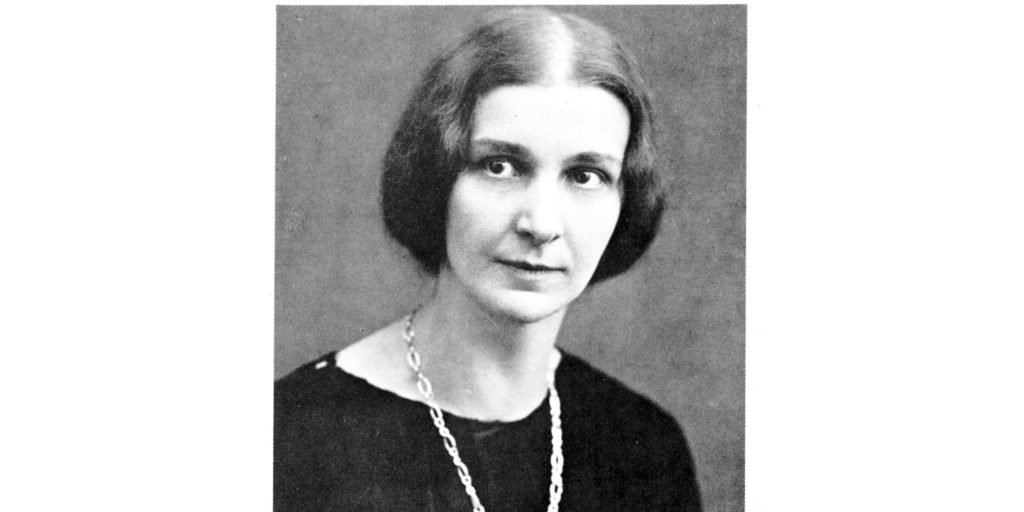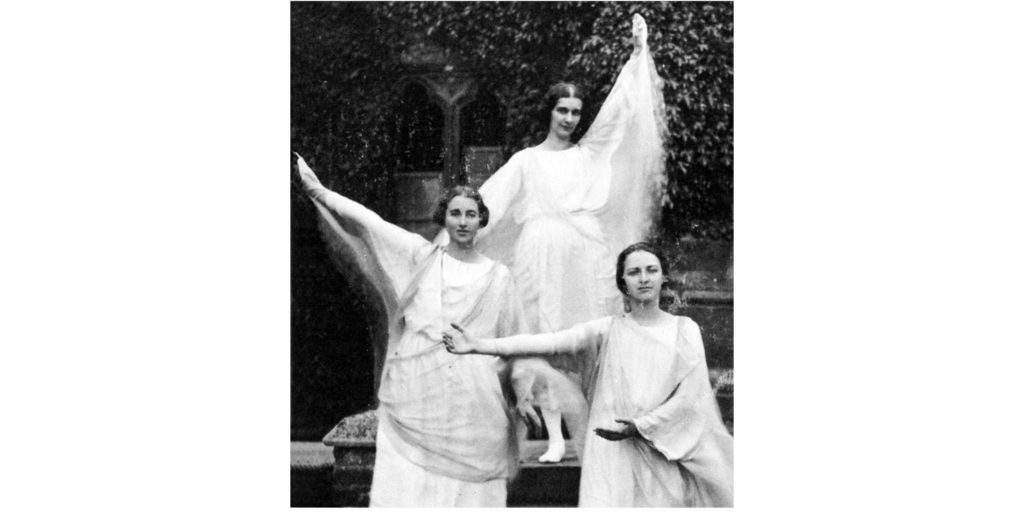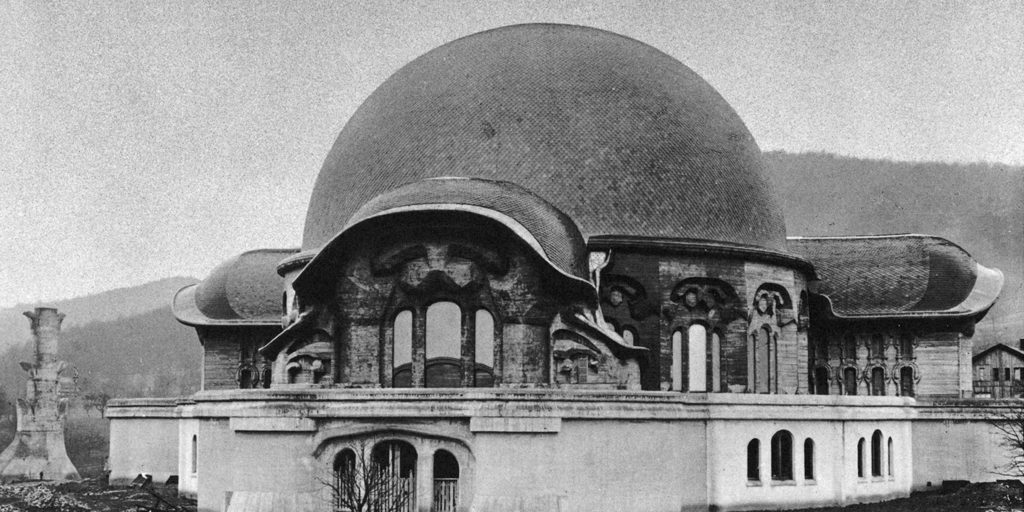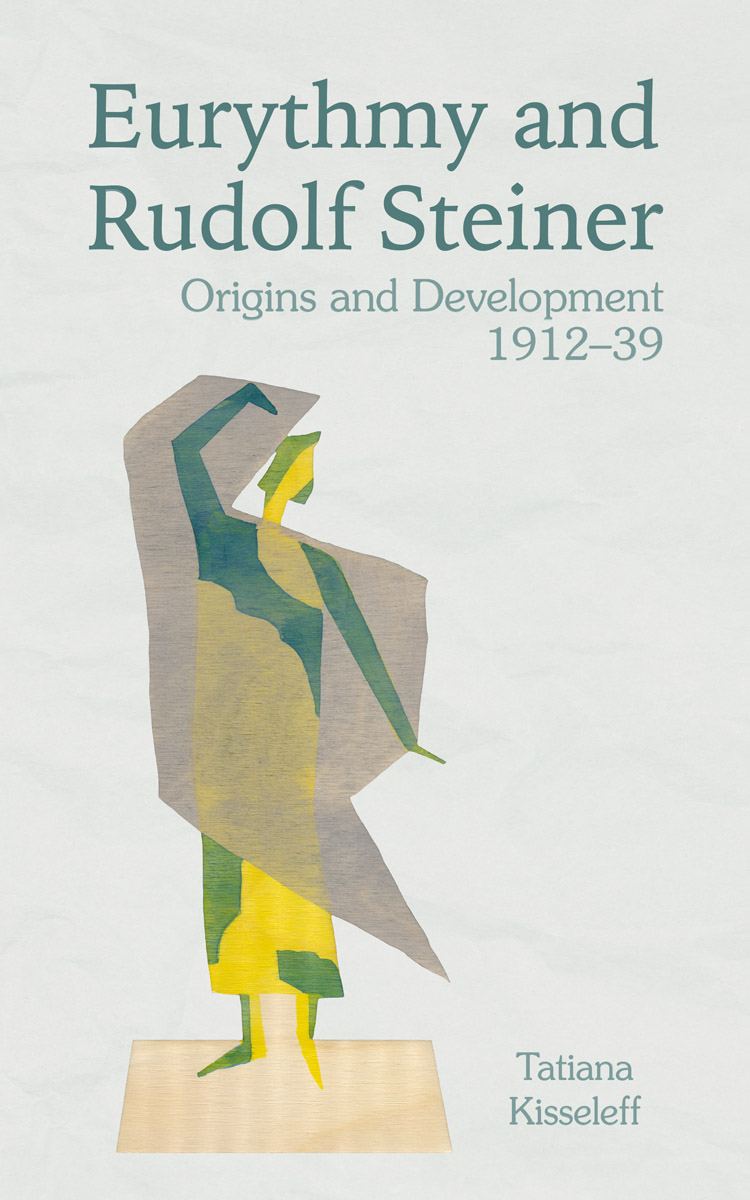Exploring “Eurythmy and Rudolf Steiner”
by Floris Books • 14 July 2021 • Extract, Non Fiction • 0 Comments
Eurythmy and Rudolf Steiner: Origins and Development 1912-39 by Tatiana Kisseleff is a first-hand account of the origins of the eurythmy movement. Kisseleff describes the spiritual foundations of eurythmy as they were explored in Steiner’s lectures and recounts the instruction she received from him.
This is both an eyewitness account of the origins of eurythmy and a record of a deeply personal journey of one person’s efforts to master it. The book is illustrated throughout with photographs, drawings, facsimile reproductions from notebooks and posters advertising early eurythmy performances, alongside accounts of performances of various pieces including Goethe’s Faust and Rudolf Steiner’s own Mystery Dramas.

Tatiana Kisseleff, 1924
In the extract Kisseleff shares her eurythmy journey from her time teaching in Berlin, Germany to her arrival at the Goetheanum in Dornach, Switzerland.
Berlin beginnings
The laying of the foundation stone of the first Goetheanum took place on September 20, 1913. At the time, I was living in Berlin.
As Rudolf and Marie Steiner mostly lived in Dornach during the months following the laying of the foundation stone, I was able to give my first eurythmy lessons in their Berlin house at Motzstrasse 17. The pupils were a group of members of the Anthroposophical Society whom Mieta Pyle-Waller had brought together. These included Mieta herself, Olga von Sivers, Louise Carson, Frau Siedlecka, Miss Harris, and Mrs Ricardo. I was the teacher and also had to recite the texts. The big dining room was emptied of all furniture so that for a few months we could do eurythmy freely and enthusiastically. Some exercises were accompanied on the piano, with pianists Walter Kühne, a German who preferred Russian music, and Wladimir Papoff, a Russian who played German music, taking it in turns to play. Mathilde Scholl was always our audience.

Oxford, 1923. From L to R: Flossie Leinhaus-von Sonclar, Tatiana Kisseleff, and Ilse Kimball-von Baravalle, wearing the dress designed by Tatiana Kisseleff.
After Christmas, Rudolf and Marie Steiner came to Berlin for a short while. Marie Steiner visited these lessons on two occasions and, before departing, expressed her satisfaction. After a few weeks, she suggested that I come to Dornach as a eurythmy teacher and give eurythmy lessons to the anthroposophists both there and in other places. On her recommendation, I took lessons on the art of speaking for a few weeks before departing for Dornach. These were with the well-known teacher, Frau Dietschi, who had been an actress at the end of the nineteenth century at the German Theatre in St. Petersburg. Marie Steiner thought very highly of the exercises she used in her introductory lessons, which helped her pupils achieve a melodious sound and accurate, precise pronunciation.
In Dornach: the Hotel Jura and the Villa Hansi
On March 30, 1914, I travelled to Dornach. On my arrival I found the Goetheanum, which at that time was provisionally called the Johannesbau, at the stage when it was customary to celebrate the so-called Richtfest, the topping-out or roofing ceremony. I saw trees decorated with many coloured ribbons on the wooden beams of the cupola, which was not yet covered with slate tiles. Next to it, in the Carpenter’s Shop, work was in full swing. In the large space where the stage would later be built and where the lecture hall would come into being, there was nothing more than carpentry benches, blocks of wood and all sorts of tools. Shortly afterwards, Rudolf Steiner gave lectures in this space. We sat everywhere and anywhere, wherever one could find a space: on building material, on machines, on the floor.

The first Goetheanum in Dornach, Switzerland, which burned down on New Year’s Eve, 1922.
Immediately upon my arrival in Dornach, I began to look for a room for eurythmy lessons. There was nothing to be found. I was growing desperate when one day, when I spoke about my difficulties to someone in the village, I was told to look at the rooms in the village pub, the Hotel Jura. (This pub does not exist anymore in its simple form as in those days; it has been enlarged and modernised.) The pub did indeed have a large room, with two little side rooms and an old, untuned piano. For thirty francs a month all of this was placed at my daily disposal from early morning until late at night. The only exceptions were Saturday afternoons and all of Sunday, when the village residents gathered for eating, beer drinking and entertainment.
Shortly afterwards the workings of destiny brought a musician into our circle: Adina Zinovsky from Reval, who was on a journey from Italy to Russia, where she taught German language and literature. Adina came to Dornach intending to stay for only a few days, but when she heard that a pianist was needed for the eurythmy lessons she decided to remain and take on this position.
I once asked Rudolf Steiner what the best musical instrument to accompany eurythmy would be, and he replied that it would actually be a lyre, although a piano would do for the present moment. He promised to create a lyre with a new construction suitable for humanity’s present stage of musical consciousness, but war broke out soon after and Steiner became too busy to realise these intentions.
At the entrance to the old canteen – in those days it was a simple wooden structure with a low roof, a few benches and tables in the small room and outside – we announced the beginning of eurythmy lessons. This was preceded by the reading of the lecture that Steiner gave in Bergen, Norway, about the different forces that enable human beings to perceive the spiritual world. In connection with eurythmy, I mention only the following from the lecture. After many years of intensive work in eurythmy, at the very least after seven years, it is possible that those forces that are active in the human being in the first years of childhood, through which the child learns to stand upright, could be called to life. These are the purest, most innocent forces in human nature. After the first three years of life, these forces become ever more lamed, especially once school begins. If one succeeds in reviving these forces, they develop the capacity to see into those spiritual worlds that the soul inhabits between the last death and the birth into the present life: namely, the perception of that which happens in the spiritual world as the human being, together with the spiritual hierarchies, prepares their present earthly life. Bringing these experiences into consciousness has immense significance for a person’s whole life on earth.
Discover more of our books on eurythmy here and join our Holistic Health email mailing list here to stay up-to-date on our latest releases and receive exclusive offers.
